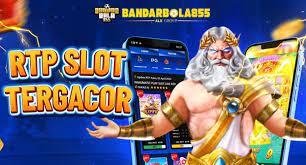Introduction
Sports broadcasting has transformed significantly since its inception, evolving from simple radio broadcasts to high-definition, multi-platform streaming. This evolution has not only changed how fans consume sports but also how leagues, 농구중계, and athletes interact with their audiences. This article explores the history, current trends, and future of sports broadcasting.
A Brief History
The journey of sports broadcasting began in the early 20th century. In 1921, the first radio broadcast of a boxing match took place, marking the beginning of sports media. The first televised sports event—a college baseball game—was broadcast in 1939. As technology advanced, so did the medium. The 1950s saw the rise of television, which quickly became the dominant platform for sports fans. Iconic moments like the “Game of the Century” between Princeton and Columbia in 1951 showcased the power of TV in reaching broader audiences.
The 1980s and 1990s introduced cable networks like ESPN, which revolutionized sports broadcasting by providing 24-hour sports coverage. The emergence of satellite TV further expanded the reach and accessibility of sports events.
The Digital Revolution
The advent of the internet in the late 20th century brought about a seismic shift in sports broadcasting. Streaming platforms like YouTube and social media channels enabled fans to access highlights, interviews, and live broadcasts anytime, anywhere. This democratization of content led to an explosion of user-generated content, where fans became creators, sharing their perspectives and experiences.
Today, sports leagues and teams produce their own content, often streamed directly to fans through proprietary apps or websites. The National Football League (NFL) and Major League Baseball (MLB) have invested heavily in their digital platforms, offering fans the ability to watch games on their own terms.
Current Trends in Sports Broadcasting
- Streaming Services: The rise of services like Netflix, Hulu, and Amazon Prime has changed the landscape of content consumption. Sports streaming has followed suit, with platforms like DAZN and ESPN+ offering exclusive access to games, documentaries, and original content.
- Interactive Viewing Experiences: Technology has enhanced the fan experience. Virtual and augmented reality are beginning to make their mark, providing immersive experiences that allow fans to feel as if they are part of the action. Companies like NextVR have developed VR sports content, offering fans a front-row seat from the comfort of their homes.
- Social Media Integration: Platforms like Twitter, Instagram, and TikTok have become essential tools for sports broadcasters. They provide real-time updates, highlights, and behind-the-scenes content, allowing fans to engage with their favorite sports and athletes on a personal level.
- Data and Analytics: The use of advanced statistics and analytics in sports broadcasting has surged. Broadcasters now incorporate real-time data during live games, enhancing the viewing experience and providing fans with deeper insights into the action.
- Globalization of Sports: The internet has made sports more accessible worldwide. Leagues like the English Premier League (EPL) and NBA have expanded their reach, offering broadcasts in multiple languages and catering to international audiences.
The Future of Sports Broadcasting
The future of sports broadcasting looks promising, with several trends on the horizon:
- Artificial Intelligence: AI is set to revolutionize how sports content is created and consumed. From personalized viewing experiences to automated highlights, AI could make sports broadcasting more tailored to individual preferences.
- 5G Technology: The rollout of 5G networks will allow for faster, higher-quality streaming. This technology could enhance live broadcasts, reduce latency, and provide richer experiences through interactive features.
- Blockchain and NFTs: The rise of blockchain technology and non-fungible tokens (NFTs) may change the way fans engage with sports content. Fans could purchase exclusive access to content or even own digital memorabilia tied to specific moments in sports history.
- Hybrid Viewing Models: As traditional television continues to adapt, a hybrid model of viewing is likely to emerge. Fans may have the option to choose their commentators, camera angles, and even statistical overlays in real-time.
Conclusion
Sports broadcasting has come a long way from its humble beginnings. As technology continues to evolve, so too will the ways in which fans engage with their favorite sports and athletes. The future promises even more innovation, making the experience of watching sports richer and more interactive than ever before. In a world where fans crave connection and authenticity, sports broadcasting stands at the forefront of redefining how we experience the thrill of competition.
